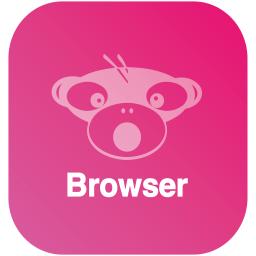
Other the past month, all of the dataJAR open source projects have received updates.
See below for details on these updates.
Continue reading
Other the past month, all of the dataJAR open source projects have received updates.
See below for details on these updates.
Continue reading
We’ve just released a little update to Jamf Switcher, bringing the app to 1.1
This update strips /?failover from a JPS URL when writing to the com.jamfsoftware.jss.plist for the Jamf Applications, but keeps /?failover when opening Safari.
1.1 is available now, & Jamf Switcher should prompt for the update when launched or can be installed via the “Check for updates” menu from within Jamf Switcher itself or manually downloaded from here.

Munki Catalog Browser is the last project that we released during our JNUC 2019 talk & is an app which allows a local macOS admin to easily list items in your devices Munki catalogs as well as exporting to CSV.
Within dataJAR, this is used to pass an up-to-date list of items available for deployment via our Auto-Update Framework.

At dataJAR we migrated from multi-context Jamf Pro deployments to Kubernetes the January after Jamf Pro 10 was released. Migrating & updating customer Jamf Pro instances at the same time.
During our JNUC 2019 talk we detailed why we did this, & we have a repo showing the raw files which allow the how to happen. These can be found, here.
However, that repo has a large explanatory gap.
As such, if containerising Jamf Pro is something that is of interest, I’d recommend Jamf’s own Kubernetes Manifests repo.
Ours can be used to cross reference, & we’ll update it periodically.

During our JNUC 2019 talk, another item James & I detailed was how we at dataJAR easily switch between the 100+ Jamf Pro instances we host.
Enter Jamf Switcher, the app to bring the word faff to the Jamf Marketplace!
For details on how this came to be, see below.
Continue reading
Within a few posts here & during our JNUC 2019 talk, James & I detailed how we at dataJAR deal with managing 100+ Jamf Pro & released a few repos with various items we use day-to-day.
This blog post is concerned with one of those repos, which is titled: JAMFSoftwareServer.log Messages.
The repo can be accessed via the hyperlink above.
This repo contains a list of messages which can appear in the JAMFSoftwareServer.log, with a note as to what action might be required due to the messages being generated.
For more details see below, else click the link & PR’s are welcomed to expand the repo.
Continue reading
It has been 5 years since AutoCasperNBI was released, with AutoImagrNBI coming soon afterwards.
However, 5 years is a long time in the world of Apple. And as such, much has changed when it comes to deploying macOS.
NetBoot & Imaging are no longer viable methods for modern macOS deployment, especially when we look at booting off of a network volume to block copy an OS.
As such, today I am ceasing development on both projects & setting their respective GitHub repos as read-only.
In a future episode of the Mac Admins Podcast I go into more detail about the history of how these apps came to be, & I’ll be at JNUC2019 next week raising a glass to both apps.

I have just updated both AutoCasperNBI & AutoImagrNBI to version 1.5.2.
The apps are now notarized, as per the forthcoming changes mentioned here.
Also, both projects Xcode settings have been updated & Sparkle bumped to the latest release 1.21.3 too.

Tonight brings a small update to both AutoCasperNBI & AutoImagrNBI, which is support for setting a custom Desktop image on Mojave.
Oh, & I correctly signed AutoCasperNBI this release (I hope).

Today I have released my seemingly annual pre-JNUC post-new macOS updates to both AutoCasperNBI & AutoImagrNBI, these are likely to be the last major updates to the apps & quite possibly the last updates to the apps ever.
Below is why I have updated the apps, & why this is likely to be their last update.